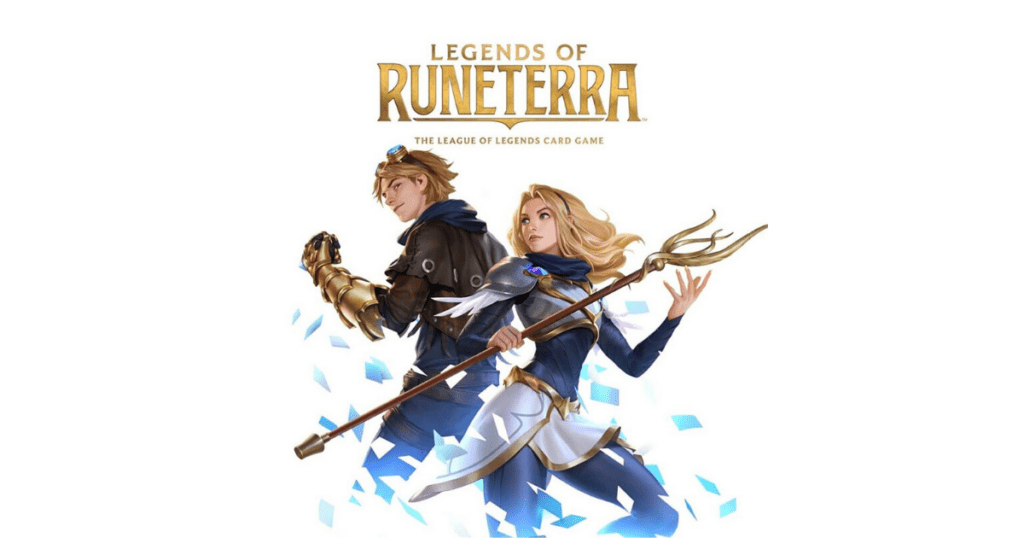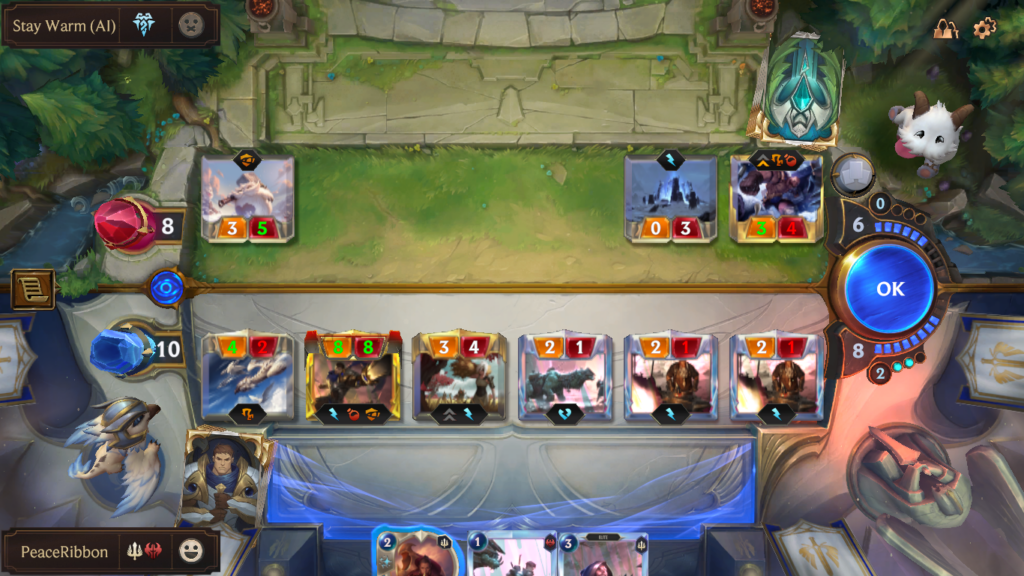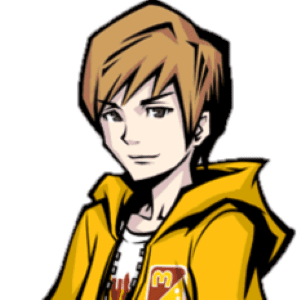How do you review a game which is constantly in flux? The changing of the game’s balance, addition of new content, and different metagames dictated by the players themselves in response to those changes all culminate in something difficult to give a lasting judgement on. The paradox here though, is one cannot wait forever to push an opinion on these “live service” games, because by the time the game stabilizes to a point where opinions can be truly lasting, the game has often already been shut down or lacks a large enough player base to matter. So having played today’s game since its second closed alpha in November 2019, I decided to face the conundrum head on and give an opinion while there’s still a game left to critique (thankfully the game likely will not face this literal existential crisis for a long time, but let me have my dramatic prose, alright?).

Developed by Riot Games, Legends of Runeterra is a digitized adaptation of collectible cardboard dueling games released April 30th, 2020 for PC and Mobile devices. Its premise involves gathering characters and locales from the wildly successful League of Legends IP and giving the daily lives of the Runeterra setting a spotlight while pitting them against one another in a battle of resource management and strategy execution. Card collecting, building decks, and battling other people or the computer in one of many modes forms the basis of the player’s interaction with the game. Keep in mind this review was written during patch 2.1.0.
As a free to play game, I feel it is ethically responsible to talk monetization immediately to avoid any confusion about the game’s actual price tag. Fortunately for Legends of Runeterra, the critical and community consensus across the board is, well, that it’s free to play. Collecting new cards is obviously the biggest hurdle to getting to play the ‘real’ game, and the game doesn’t just flood you with cards left and right, but the amount of time you need to play to build the deck you want is relatively low. This is because the game’s progression system is spaced out just enough that a new player can collect give or take 20 cards per day if they’re dedicated. Furthermore you get to direct your unlocks to the faction you want after the prologue progression track, and oftentimes you’ll collect shards and wildcards which can be redeemed for whatever you want anyways. And if THAT isn’t enough, once a week you get a set of booster packs called “The Vault” which grants increasingly generous rewards if you played a lot that week, potentially including a token to play a special drafting mode which pays out even more cards! Okay, okay… with all that said, if you’re only playing semi-regularly you can still find yourself short on resources when you want to try new deck ideas, but on the whole the game gives you what you put into it and then some. This leaves monetization up to mostly just cosmetics, totally unrelated to winning the game (but VERY related to showing everyone I’m a true Demacia fanboy), and it is a fair way of providing cash to support the game’s development. They do technically allow you to buy wild cards and some prebuilt decks, but if you don’t have enough self-control to just get cards by enjoying the game, then please do not start playing Legends of Runeterra because that’s the definition of scamming yourself out of free content.
Gameplay begins in the deck builder, where you are tasked with constructing 40 card decks out of cards from your collection to be used in most modes. Decks can revolve around whatever card you want to make your win condition, but most often this takes the form of champion cards. You can include up to six champion cards in your deck (the copy limit of all cards is 3) and they have the unique ability to permanently upgrade themselves into a stronger version when certain conditions are met, so meeting those conditions will often be your core strategy. The deck is otherwise made up of followers and spells taken from one or two of the game’s eight (eventually planned ten) regions. Overall deck design is often heavily dictated by a few really powerful cards, but the card design is usually flexible enough that you can combine them in many different and effective ways, though some strategies require significantly more creativity than others to get just right.
The battles themselves are similar to other card battling games like Magic: The Gathering and its many imitators, with players playing units to create board presence and using spells and other effects to strengthen their position and weaken the opponent in an effort to reduce their opponent’s health (the Nexus) to zero before they do. This is a very simplified description of collectible card games as sometimes strategies arise around card effects that change the dynamic of play significantly, right down to different win conditions altogether, but these still come from the same base structure. The system which separates Legends of Runeterra from other games of its kind more than anything else is its priority system. Only one player gets a free attack token at the start of each round, but that doesn’t really make it “their turn.” On the contrary, every action prompts a reaction from the other player, making the game very conversational. You play a card, they play a card. This leads into some very intensive decision making, such as the strategy of attacking at the start of your turn to prevent extra blockers from being played at the cost of being especially susceptible to enemy spells (which can be played during combat if they are “Fast” or “Burst” speed), versus playing some cards and allowing the opponent to develop, trying to exhaust their resources until you’re sure you can attack safely. Once you’ve played the game long enough to know which cards are staples in certain deck archetypes, there’s a lot of mindgames to be had trying to play around those threats, and this delicate dance of constructing a strategy and adapting to whatever you draw in hand is what makes the game exciting. You can even get into crazy situations where you and your foe play spell after spell, passing priority back and forth, trying to undermine each other until there are four or more spells about to resolve in a single chain.

As one might expect though, all of the game’s systems interlock by virtue of there being a lot of different concepts to manage. On units alone there are dozens of different keywords and mechanics to learn, and while each one is ultimately pretty simple once understood there’s certainly too much for one to memorize right away. I haven’t even mentioned really important mechanics like spell mana management but this is a hefty enough review already! My advice is to A) play all of the in-game tutorial missions to gauge the functions of a variety of mechanics, and B) hop into a game against the computer to test out cards you’re not confident you understand. This giant layering of mechanics, as one might discern, exists because of the game’s ever changing nature and the need to engage long time players with fresh mechanics, but more on that later.
Beyond the main game mode there are a number of alternate ways to enjoy the game. Expeditions is the draft mode mentioned earlier where you construct a deck out of a semi-randomly generated pool of cards and try to get 7 wins and earn big rewards. I’m not much of a draft player but it’s pretty popular among those who are into that style of play. There’s also two rotating game modes, Labs and Gauntlets. Labs is a section which includes three causal game modes that generally showcase the potential of what future permanent game modes might have to offer. Gauntlets are limited time constructed events with special rules like single copies of cards only, or a pick and ban system which I would totally implement in Ranked if I could (as is, you really just que for Ranked with your best deck and hope you get good matchups). Overall if you’re looking to mix up your time spent with the game, it’s very much got you covered.
It’s difficult to gauge Legends of Runeterra storywise in the conventional sense because it lacks a story mode, and what story you can piece together from card artwork, flavor text, and voiced lines are mostly just slices of life for the characters and creatures involved, not exactly grand narratives with a lot of weight and drama. To truly understand this game’s lore is to get familiarized with Runeterra lore as a whole, and to truly breakdown the critical quality of that I would need an entire other article dedicated to its 11 year history. So to summarize my thoughts on the lore as briefly as I can, one can look at the characters and ideas presented in Legends of Runeterra and clearly see that the storytellers have been taking a world originally built to be a simple showcase of various archetypes, and trying to insert a moody darkness into it without really abandoning its roots altogether. It’s really frustrating, because the characters they have brought us are both iconic and speak to something shared and instantly recognizable to many people, but the setting has slowly been warped by a misguided, if well meaning, attempt to be more complicated than what it actually is, and those old characters become confused and tarnished in the process.
Now’s probably a good time to mention that the setting of Runeterra covers a LOT of different kinds of fantasy, one might even say it tries to cover a fantasy for everyone. I think this makes the setting particularly approachable and fun to explore, but with such a wide spread of subject matters also comes a wide selection of potential concerns for Catholics. The undead spirits of the Shadow Isles are the obvious stinkers in the room (both in aesthetic AND how annoying they are to play against!), but there’s also scores of shamans, wizards, witches, monsters, and fantasy religions/spiritualities and their related deities. Not unexpected for a setting with a name that means “rune earth”, but definitely worth considering when discerning if the game is right for you. I think the most extreme the game gets is in its depiction of the Crimson Circle, a secret order of blood magic users in Noxus with voice lines/artwork that can be really sexually suggestive, masochistic, sadistic, ect.
With all that said however, don’t let me move on from the story and aesthetics without mentioning how incredible Legends of Runeterra’s artistic direction is. Sure the game’s menus and information displays are clean and user friendly, but what I really want to talk about is the artwork for the unit cards. Every single champion and follower in the game can be viewed in an expanded artwork plus some flavor text, which invariably beg to be screenshot and made into drop-dead gorgeous desktop backgrounds. Some of these drawings even go above and beyond to tell you the story depicted in them. Take my favorite card Vanguard Firstblade for instance. Between his torn cape, scratched armor, a fresh cut on his arm, and the fact he’s a Demacian soldier without a helmet (which is unusual), he looks like he could be a celebrated hero with many tales to tell of his valor. But in the full artwork he’s not the center of attention, because with his flavor quote we learn that he doesn’t desire any of that personal glory since he believes in selfless duty above all. Simply beautiful.

This storytelling aspect of the cards is nicely accented by the voice acting for every playable unit, which is both well done and nostalgic for fans of Riot’s prior work. My brother walked in on me playing with the champion Garen during the beta, and hearing Jameson Price’s wonderfully earnest performance for the first time in years caused, and I quote, “something dead inside of him to wake back up.” The game’s music is both melodically interesting and ambient enough for thinking about plays, which is a real win-win, but different songs for the gameplay are locked behind whether or not you have a paid alternate board equipped so the average player won’t really get to enjoy it all without the help of Youtube. My only real complaint with this game artistically is the KDA content. For those unaware, Riot has been pushing a fictitious Korean-pop girl group based on League of Legends characters, and to coincide with their new album they ran an event in-game with a battle pass complete with unlockable cosmetics, which is fine, but this included fully legal new cards (which thankfully were on the free track of the battle pass and can be unlocked using shards and wildcards now anyways). Some of them are actually competitively viable cards, and seeing these garish, glitzy K-pop dance animations in my high fantasy card game just feels so wrong, and sadly I imagine the bank accounts of the developers encouraging them to do this again and muddying the game’s aesthetics further at some time in the future with some other event.
Finally I should discuss how the game’s updates have been handled thus far and how I expect that to impact the play experience going forward. Legends of Runeterra is updated every two weeks, and most of the updates include new purchasable cosmetics and often also has new rotating game modes, quality of life updates, and other features. This has done a good job of keeping new ways to play the game coming, and I doubt it will disappoint in the future. I just hope we get more non-rotating constructed formats in the future so that players can have options for what Ranked ladder they want to conquer (my personal wish is for a format centered around common-rarity cards). Every other patch we get balance patches to adjust the power level of certain cards to weaken the hold of dominant decks in the meta and encourage players to try different builds. Ultimately trying to balance a card game for variety in 2021 is a fruitless endeavor because the internet allows us to share deck information and “solve” the game again within a few days, but I commend the developers for trying and it does keep the game fresh, at least until you find out the current meta is not to your taste. Of course the biggest updates come in the form of new card expansions, for which they’ve tried different release cadences to maximize the length of the “new strategy discovery period”. While the latest expansion in particular showcases a not insignificant amount of power creep in card design (seriously, Invoke is absolutely crazy if they get good draws!) but they also at least try to infuse new life into older strategies, even if it fails, and I hope combined with the aforementioned balance updates we can expect a lot of fun from each new set.
In conclusion, Legends of Runeterra is a breath of fresh air among free-to-play games, with strikingly ethical design practices, deep and interesting gameplay, and lots of worldbuilding for a setting which is admittedly very flawed, but no less a showcase of how to make instantly iconic characters. Your enjoyment of this title definitely may depend on your patience for card games or your preexisting enjoyment of the Runeterra brand, but if those aren’t an issue there’s no deck-builder more inviting than this one on the market right now. Just remember to take breaks.
P.S. Play “Elite tribal” for the true PeaceRibbon Experience™.
Scoring: 80%
Gameplay: 5/5
Story: 2/5
Art and Graphics: 5/5
Music: 3/5
Replayability: 5/5
Morality/Parental Warnings
Legends of Runeterra features characters and creatures inspired by many different types of fantasy and real-world inspirations, and much of it is intertwined with archetypes like magic, monsters, undead spirits, and various cosmic forces as mentioned in the review proper, and could be frightening to younger audiences. A few of the characters are dressed in revealing clothing. A few voice lines include light swearing, and a few characters also have voice lines/artwork that suggest LGBT relationships. Some of the implied story touches thematically on real-world issues, sometimes very clumsily. Online interactions come with all the usual warnings, though communication with players not on your friends list is restricted to emotes. The game features in-game purchases, so take care not to overspend.
